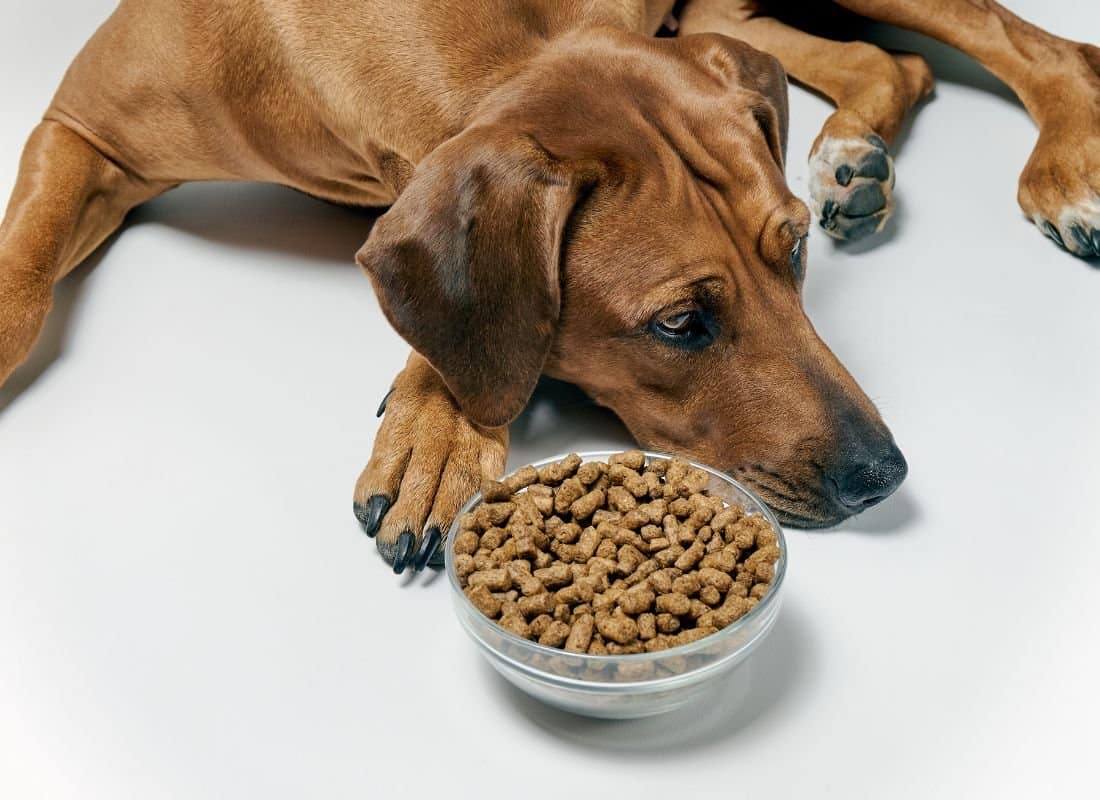An Absolute ‘Not Happening’ When you See These Ingredients on Your Dog Food Label

As dog parents, ensuring our furry kiddos get the best nutrition possible is a top priority. But with so many options on the market, deciphering dog food labels can feel overwhelming. Knowing which ingredients to avoid can help you choose a healthier, safer option for your pup. Here are some of the top ingredients to watch out for and why they’re best left off your dog’s menu:
1. Meat By-Products or Animal By-Products
What They Are: These are the leftover parts of an animal not typically consumed by humans, such as organs, beaks, feet, and sometimes even euthanized pets and diseased tissue.
Why Avoid: While organs like liver can be nutritious, generic “by-products” lack transparency and may include low-quality or unsafe parts. Stick to foods that list specific, high-quality meat sources instead.
2. Artificial Colors
Common Names: Red 40, Blue 2, Yellow 5, and Yellow 6.
Why Avoid: Dogs don’t care about the color of their food, and artificial dyes have been linked to hyperactivity, allergies, and potential long-term health risks. These additives are unnecessary and purely for marketing purposes for their pet parents’ as eye candy..
3. Artificial Preservatives
Common Examples: BHA (butylated hydroxyanisole), BHT (butylated hydroxytoluene), and ethoxyquin.
Why Avoid: These chemicals are used to extend shelf life but have been associated with cancer and other health issues in both humans and animals. Opt for foods preserved with natural alternatives like tocopherols (Vitamin E) or rosemary extract.
4. Corn Syrup and Added Sugars
What They Are: Sweeteners used to enhance flavor and increase palatability.
Why Avoid: High sugar intake can lead to obesity, diabetes, and dental problems among other organ damage. Dogs don’t need added sugars in their diet, so look for foods without these harmful additives.
5. Rendered Fat
What It Is: A generic fat source made from animal by-products, often used to enhance flavor.
Why Avoid: Rendered fat can harbor harmful bacteria and toxins. Additionally, the lack of specificity (e.g., “animal fat”) makes it impossible to gauge the quality of the ingredient.
6. Generic Meat or Fat Sources
Examples: “Meat meal,” “animal fat,” or “poultry meal.”
Why Avoid: These vague terms can include low-quality or unregulated ingredients. Instead, choose foods with clearly identified sources, such as “chicken meal” or “beef fat.”
7. Fillers
Examples: Corn, soy, and wheat.
Why Avoid: These ingredients are often used to bulk up food cheaply but provide little to no nutritional value. They can also cause digestive issues and allergies in some dogs. Look for recipes with wholesome grains like oatmeal or brown rice if your dog tolerates grains.
8. Propylene Glycol
What It Is: A synthetic additive used to maintain moisture.
Why Avoid: Propylene glycol is also found in antifreeze. While the form used in dog food is considered “food grade,” it can still lead to digestive upset and long-term health risks.
9. Melamine
What It Is: An industrial chemical sometimes illegally added to boost protein levels in testing.
Why Avoid: Melamine contamination has been linked to pet food recalls and can cause kidney failure. Always choose trusted brands with rigorous testing protocols.
10. Excessive Salt
Why Avoid: While a small amount of sodium is necessary, excessive salt can lead to dehydration, kidney issues, and high blood pressure. Look for brands that don’t rely on salt to improve flavor.
11. Carrageenan
What It Is: A thickener derived from seaweed, often found in canned or wet foods.
Why Avoid: Some studies suggest that carrageenan can cause inflammation and gastrointestinal issues in pets. While more research is needed, it’s best to err on the side of caution.
12. Gluten Meals
Examples: Corn gluten meal, wheat gluten meal.
Why Avoid: Gluten meals are cheap protein substitutes that lack the essential amino acids found in high-quality meat. They can also trigger allergies or sensitivities in some dogs.
Final Thoughts for Now
When choosing food for your dog, look for transparency and high-quality ingredients. Opt for brands that prioritize named meat sources, wholesome grains (if included), and natural preservatives. Your dog’s health starts with what’s in their bowl, so taking the time to read labels carefully is one of the best investments you can make in their well-being.
Leave a Reply
You must be logged in to post a comment.


Leave a Comment